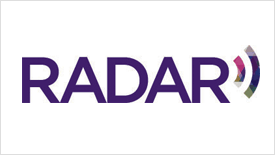Anticoagulants
Knowing the similarities and differences between anticoagulants is key to their safe and effective use.
For consumers, check out Anticoagulant medicines and how to take them
Key points
- Assess stroke risk to determine whether oral anticoagulation is recommended, then identify and manage modifiable bleeding risk factors.
- Discuss benefits, harms and lifestyle factors with each patient, when selecting and reviewing oral anticoagulant medicines.
- All people prescribed an oral anticoagulant medicine need individualised clinical monitoring.
Australian Prescriber: Combining anticoagulation and antiplatelet drugs in coronary artery disease

Jyotsna Janardan and Harry Gibbs
Aust Prescr 2018;41:111-5
Balancing the risk of thrombosis and bleeding after acute coronary syndrome can be difficult. Is triple therapy better than dual therapy?
Predicting risk with oral anticoagulants

Apixaban (Eliquis), dabigatran (Pradaxa), rivaroxaban (Xarelto) and warfarin (Coumadin or Marevan) can all be considered for the prevention of stroke and systemic embolism in adults with non-valvular atrial fibrillation.
Their safe and effective use relies on balancing the benefits of blood clot prevention with the risks of bleeding – whichever anticoagulant is selected.
Idarucizumab (Praxbind) for dabigatran (Pradaxa) reversal: what you should know

Idarucizumab is a specific non-vitamin K antagonist oral anticoagulant (NOAC) reversal agent that can reverse the anticoagulant effects of dabigatran. It does not reverse warfarin or the other NOACs.
Australian Prescriber: Long-term prescribing of new oral anticoagulants

Paul KL Chin and Matthew P Doogue
Aust Prescr 2016;39:200–4
The choice of anticoagulant depends on the characteristics of the patient and the medicine. Instead of considering whether non-vitamin K antagonist oral anticoagulants are ‘superior’ to warfarin, it is more constructive to see them as useful arrows in the prescriber’s quiver of oral anticoagulants.
Quick primer on idarucizumab and NOAC-associated bleeding
Why was idarucizumab (Praxbind) developed, when is it prescribed, and when should it not be prescribed?
RADAR: Aspirin and an oral anticoagulant – can they be used together?

A recent meta-analysis showed that in patients receiving single low-dose aspirin, additional treatment with an oral anticoagulant decreased the rate of major adverse cardiovascular events by 30% but clinically significantly increased the rate of bleeding events by 79%.
CPD options
For pharmacists
- Journal Reading: How to manage warfarin therapy
- Journal Reading: Long-term prescribing of new oral anticoagulants
For students - National Prescribing Curriculum
For your patients
Our NPS MedicineWise warfarin dose tracker is a useful tool to help your patients record their warfarin doses and INR results.
Clinical resources and tools
Download these quick summaries to help identify or recall key similarities and differences between the oral anticoagulants.
Clinical guidelines
Clinical Excellence Commission: Non-vitamin K antagonist oral anticoagulant (NOAC) guidelines
The Clinical Excellence Commission (CEC) was established in 2004 as one of the five key structural reforms outlined in the NSW Health Patient Safety and Clinical Quality Program (PSCQP), and as an evolution of the Institute for Clinical Excellence.
The CEC NOAC Guidelines and associated documents are intended to assist clinicians with the inpatient and discharge management of patients receiving a NOAC.
Stroke Foundation: Clinical Guidelines for Stroke Management
The Australian Stroke Foundation’s clinical guidelines cover the whole continuum of stroke care, across eight chapters. These living guidelines are an update of the 2017 guidelines.
2016 ESC Guidelines for the management of atrial fibrillation developed in collaboration with EACTS
The European Society of Cardiology (ESC) and European Association for Cardio-Thoracic Surgery (EACTS) developed these 2nd edition guidelines in response to newly available information and substantial progress in atrial fibrillation management since the last guidelines were published.
The ESC guidelines represent the official position of the ESC.
Australian Medicines Handbook: Cardiovascular drugs
The Cardiovascular drugs chapter of the Australian Medicines Handbook has a section on tachyarrhythmias, which includes information about atrial fibrillation.
Therapeutic Guidelines: Cardiovascular
The Cardiovascular guidelines of eTG complete has a section on antithrombotic therapy, which includes information about anticoagulants.
It also has a section on tachyarrhythmias, which includes information about atrial fibrillation.
Related topics
Clinical Topic: Blood pressure
Best practice in blood pressure (BP) measurement, coupled with absolute risk assessment, can help to improve management of cardiovascular risk and inform quality use of BP lowering medicines to improve cardiovascular health in adult patients aged 45 years and over (35 years for Aboriginal and Torres Strait Islander adults).
- Use absolute CVD risk to inform when to start pharmacological therapy.
- Start with a single ingredient BP lowering medicine for primary prevention.
- Confirm and communicate the active ingredient(s) in the BP-lowering medicines prescribed for your patients.
- Tailor pharmacological therapy based on the assessment of BP and treatment goals.
- Ask about adherence to BP lowering medicines.
- Measure, manage and monitor BP using a best practice approach, recognising the value of out-of-clinic assessment.
Clinical Topic: Managing lipids
Use of statins in primary care and patient adherence to these medicines remains suboptimal.
- Assess absolute cardiovascular risk, using an appropriate risk calculator, before prescribing lipid-modifying medicines.
- Prescribe lipid-modifying medicines for patients with high cardiovascular risk.
- Optimise LDL lowering by adequately trialling statin therapy before adding a second lipid-modifying medicine.
- Recognise that statin intolerance is rarely life-threatening and may have a lower incidence than is commonly reported.
- Systematically assess and manage suspected statin-associated muscle symptoms (SAMS).
